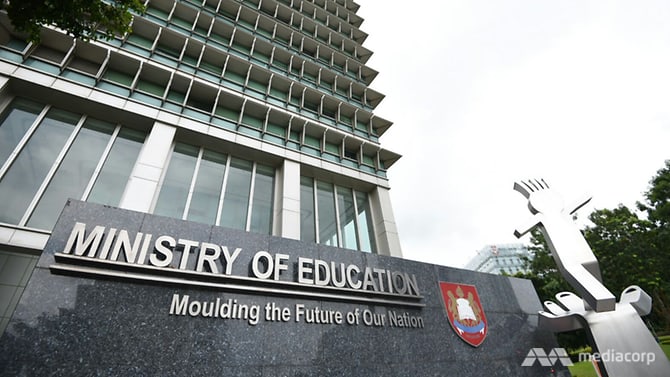
Commentary: Look beyond state-of-the-art campuses for what matters in education
By uni marketingSINGAPORE: This week, students and staff of Eunoia Junior College kicked off their academic year by moving into their new high-rise campus at Sin Ming Place.
The complex, which includes a 10- and 12-storey block was built at a cost of about S$100 million.
That amount immediately prompted a wave of social media comments that questioned the need for a new junior college (JC) campus, particularly because eight other JCs had just merged into four last year.
A further point, about two-thirds of Eunoia’s 1,250-strong student body are from the Integrated Programme (IP) of Catholic High School, CHIJ St Nicholas Girls’ School and Singapore Chinese Girls’ School.
This led to some questioning if elitism was at play with some JC students gaining access to a new school building while others saw their schools being merged.
However, Eunoia was set up as a new educational model back in 2010, as there was no suitable JC at that time to partner these three secondary schools for the IP.
This was long before the merger decision was made in 2017, when a study determined enrollment rates for JC would fall in the long term.
Still, S$100 million is no small amount by any measure so it is worth asking if the spending on this campus has been prudent.
The Ministry of Education’s 2019 budget documents reveals an estimated project cost of almost S$144 million, which puts this amount for construction well within budget.
IN LINE WITH OVERALL EXPENDITURE ON EDUCATION INFRASTRUCTURE UPGRADING
It is useful to regard the new Eunoia campus in a wider context.
The Government has long been investing heavily in multiple aspects of the country’s education infrastructure – and it is timely for this to include JC upgrading. This includes major spending on polytechnics and ITE.
In 2013, about S$1 billion was allocated to upgrading the various polytechnics with new classrooms, laboratories and sports and recreation facilities.
Vocational and technical education has not been neglected either. The Government had opened three ITE campuses over 2006 to 2013, and had announced plans to spend S$2 billion on ITE in 2011.
On the contrary, a majority of JCs have not received such attention of late, having been built or upgraded before 2002. Many of their premises, such as those currently occupied by Temasek, Jurong Pioneer and Anderson Serangoon, are at least 35 years old.
TIME FOR JUNIOR COLLEGES TO BE UPGRADED
It cannot be denied that some of the older JC buildings have become rather outdated and could do with significant refurbishment.
For instance, Eunoia’s interim location since 2017 has been the former Raffles Junior College (RJC) premises on Mount Sinai Road, which was built in 1984.
When I attended RJC at this campus in the early 2000s, the school was already bursting at its seams with multiple repurposed shipping containers used as temporary classrooms.
Years later, I can only imagine that the Mount Sinai complex, while well-loved by many of us during our time, is now even less suited to cater to today’s students with its limited facilities and space.
As Minister for Education Ong Ye Kung said in announcing the JC Rejuvenation Programme in 2019: “I think our JCs deserve new campuses too.”
Up next from 2022 to 2025, four other JCs, including three of the merged schools - Anderson Serangoon, Jurong Pioneer, Yishun Innova - and Temasek, will either be rebuilt or upgraded.
If Eunoia’s new campus, which includes thoughtful student-friendly amenities such as a two-storey library, performance stage, activity deck and eight-lane track, is anything to go by, students of these upcoming JCs are in for a treat.
After all, all students, regardless of whether they choose to pursue academic, technical or vocational modes of education, can benefit from having access to well-planned facilities from labs for science lessons to studios for the performing arts.
Singapore thrives as a knowledge-based economy. In a world of automation and disruption where more will be demanded of every unit of human capital, investing in the education of every Singaporean is serious business.
Surely, it is heartening for parents - and the general population - to know that the Government is taking a thorough approach to revamping educational infrastructure and investing in education.
LOOK BEYOND THE FANCY CAMPUS
Let’s also look beyond multi-million dollar school campuses and consider whether this spending on a large cohort of IP students might be entrenching elitism.
Some have speculated that the IP programme would further entrench social stratification but some MOE findings indicate that the mix of students in IP schools is actually better compared to non-IP schools.
To get a gauge of diversity, MOE’s guide is that every 100 Secondary 1 students in a school should come from 20 or more primary schools.
In 2019, 88 per cent of IP schools (15 in total) have hit that target with students. At prestigious schools like Hwa Chong Institution, Raffles Institution and Raffles Girls School, students hailed from over 100 different primary schools.
It is important to keep this up and to encourage students to mix among themselves regardless of their backgrounds.
As for interactions with the community at large, most would probably agree that more can always be done.
At Eunoia, where the Bishan North Community Club is integrated into the new campus, there are plans for students to take part in community activities with residents, including children and the elderly.
Let’s hope these ideas come to fruition and that more of such activities are implemented in a sustainable way in other schools too.
MORE THAN BRICK AND MORTAR
We can have these discussions about campuses but the essence of education is about so much more.
It goes without saying that teachers who care about their students’ academic and personal growth are irreplaceable. At my alma mater, being the bunch of nerds that we were, we would sometimes cajole our teachers into sacrificing their personal time by holding extra classes after school hours.
These teachers were invaluable in inspiring many of us to aim for possibilities beyond our then-limited imaginations by telling us about scholarship opportunities and institutes of higher learning abroad.
With the benefit of hindsight, I would like to thank all the teachers who have gone above and beyond the call of duty for my education. May the relevant authorities as well as students and parents recognise and appreciate the contributions that teachers continue to make.
Above all, I have fond memories of huddling with my classmates at study tables placed along the school’s corridors as we revised and worked out tricky science and math problems together.
I credit my much smarter friends for helping me understand how to put these blackboard theories to practice.
I also have equally fond memories of being a part of the school’s drama club where I spent many hours at performance rehearsals as part of the operations and backstage crew.
Do I wish I could have studied with my friends in air-conditioned comfort and that we had nicer, more modern equipment and facilities for our co-curricular activities? Definitely, yes.
But none of these indulgences would have mattered if not for the people who made these experiences so rich that they have become memories to last a lifetime.
And that, more than anything else, should be what those lucky enough to spend time in these shiny, fancy new schools and every student who might study elsewhere instead, aspire towards.
News Credits: https://www.channelnewsasia.com/news/commentary/eunoia-junior-college-new-campus-singapore-moe-budget-elitism-12249726








